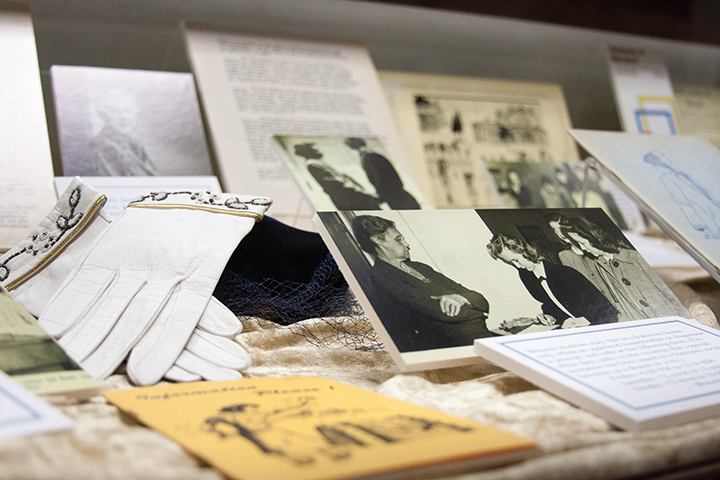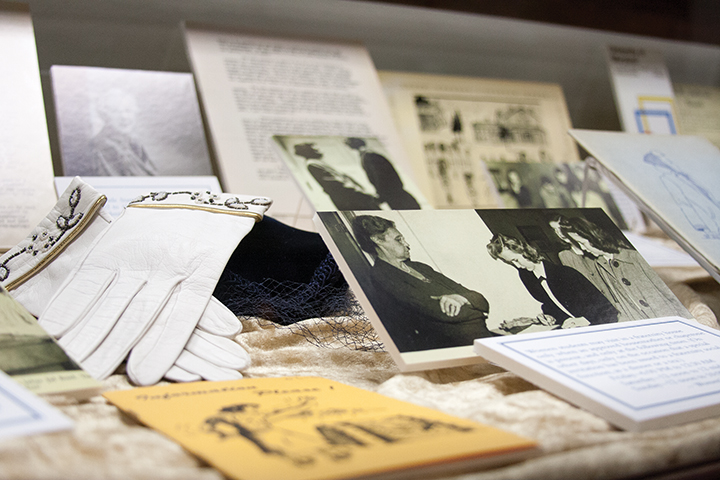Imagine a time when staying out past 7 p.m. on a weeknight was rebellious and smooching under an overpass was risque.
During the early- to mid-20th century, students at this university lived with rules that — by today’s standards — may seem a little ridiculous.
“You Did What?!?,” a new exhibit in McKeldin Library organized by university archivists Anne Turkos and Jason Speck, shows examples of some of this university’s old policies through photos and artifacts from the archives. It was designed after students in the university libraries’ student advisory group requested that more of the university’s history be displayed in McKeldin, Turkos said.
“Some of these rules are just so wacky and crazy,” Turkos said. “We thought students would get a kick out of it.”
The first part of the exhibit sits near the library’s entrance, next to the information desk. Glass cases hold decades-old items representing rules and traditions that have since been put to rest.
Beginning in 1914, all incoming freshmen were required to wear beanie caps — three of which are on display in the exhibit — to brand them as new, inexperienced students. There was a short lapse in the tradition during the late 1940s when students returning from World War II on the GI Bill refused to wear the hats after having been through combat, Turkos said. The last photograph of a freshman wearing such a beanie on the campus was taken during the 1960s.
In another case, a sheet of yellowing paper shows a financial transaction — a student asking the university administration for money his parents sent him. The administration used to dole out students’ spending money, but only once it approved what the money would be used for, Turkos said.
Being a female student came with even more rigid guidelines. Women had to sign in and out of their dorms, were required to return by 7 p.m. on weeknights and rarely could have male visitors.
One case displays a letter from Adele Stamp, then-dean of women at this university, complaining about the repulsive behavior she witnessed between men and women, such as their “petting parties” and “unrestrained courtship.”
The second part of the exhibit is located on the second floor in the Portico Room, a group-study space. Enlarged photographs hang around the room, many taken from old yearbooks, each reflecting on an aspect of the information on display downstairs, Turkos said.
One image shows a young couple leaning in for a kiss inside the “kissing tunnel,” which passes under Regents Drive near the Memorial Chapel. Another shows a young woman wearing a beanie similar to the ones on display downstairs, with a sign around her neck that reads “I can’t help it I’m a freshman.”
“We can leave that in the past,” said Carlos Moreno, a senior psychology major, laughing at the photograph. “It’s funny, though. I like seeing the throwback pictures.”
Having the exhibit in the library makes the information accessible to all students, said Heather Foss, development director for the university libraries.
“It gives an entire crop of students the opportunity to learn something new every time they are in here,” she said.
Organizing the exhibit was no easy task and took archivists and collaborators all summer to put together but has been well worth the effort, Speck wrote in an email.
He and Turkos will teach HIST 429F: Special Topics in History; MAC to Millennium: History of the University of Maryland, for this first time this spring, Turkos said.
“This will be another way that we’ll be able to reach out to the campus community and talk about our history,” Turkos said.
The McKeldin exhibit makes it fun and easy for students to connect to their history, Speck wrote, and it may also help them appreciate their present.
“All students naturally grumble about rules, but this exhibit places those complaints in a historical context,” he wrote. “Perhaps today’s rules are less onerous or perhaps not, but they certainly have changed a great deal since the first classes in 1859.”
The “You Did What” exhibit at Mckeldin Library, displayes articles and descriptions of the student rules of behavior in place during the early years at the University of Maryland. Nov. 11th, 2013.
Hats are shown at The “You Did What” exhibit at Mckeldin Library, which displayed articles and descriptions of the student rules of behavior in place during the early years at the University of Maryland. Nov. 11th, 2013.





